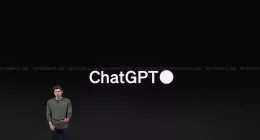While Facebook is turning its attention towards augmented reality, it hasn’t forgotten about the budding world of virtual experiences. At the F8 developer conference, the social networking giant has today announced the launch of React VR, an open-source JavaScript framework for building web VR and interactive 360-degree experiences.
Defining the platform in simple terms, the blog post reads,
React VR lets you build VR apps using only JavaScript. It uses the same design as React, letting you compose a rich VR world and UI from declarative components.
As mentioned above, this new VR-focused code library is built upon the existing React (and React Native) framework, which is being used to power the user interface code of Facebook and Instagram’s website. React VR will enable anyone with the understanding of JavaScript to quickly compose scenes with the combination of imported 360 panoramas and 3D models with 2D UI, text, and images. Just like online websites, the idea here is to build interactive, immersive experiences by employing audio and video capabilities of the framework.
We just announced the React VR project during the Oculus Connect Keynote, here’s the Hello World of VR: pic.twitter.com/VArPTYQlFs
— React (@reactjs) October 6, 2016
These virtual reality experiences can be distributed across the interwebs, courtesy of existing web technologies such as WebGL and WebVR that power React VR. But, Facebook was faced with a prominent challenge when developing a framework for the VR world. The social media giant knew that they’d have to ensure React reconciliation or scene updation in a single frame as there no lag should be visible to the person wearing the headset — interacting with a virtual world at 60 frames per second (fps), or 90 fps on Oculus Rift.
But, Facebook solved this issue simply by laying the groundwork using React Native patterns, which made it easy for the developer team to get the apt performance for Javascript apps in the VR ecosystem. This was able to make the single-threaded JavaScript VR app run even faster by creating a closed loop between receiving headset orientation updates and re-rendering the scene — reduces motion sickness.
The source code for React VR is now available for access on GitHub along with the official documentation, which can be found right here. Developers with experience in building React apps for the web would be able to easily pick up React VR and build virtual reality experiences. They will also be able to leverage existing tools present in the React ecosystem to build 3D interfaces as they’re aware of how React manages the data flow. Thus, we could see an uprise in the number of VR experiences making their way to Oculus’ Carmel browser in the coming months.





